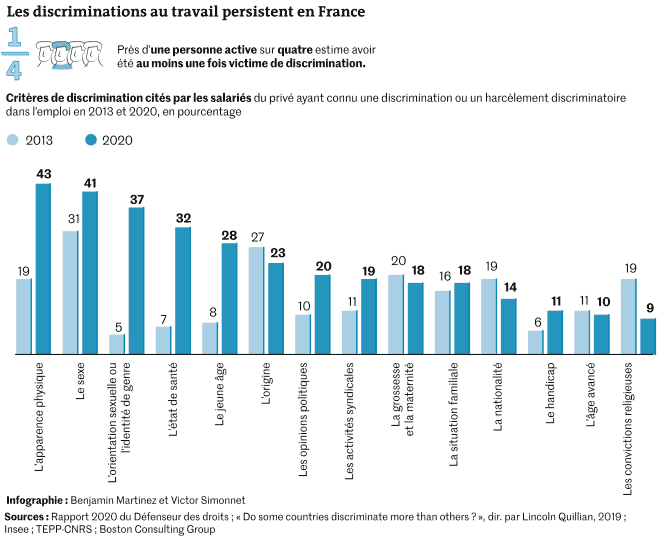For their age, their sex or their origin, they are still numerous to run up against the “glass wall”. According to a study conducted by Occurrence and PwC published on September 30, 48% of private sector employees believe they have been victims of discrimination at least once. Businesses are starting to appreciate the challenge. “Our employees must be the image of our company, but diversity in a company does not happen by itself. If you don’t decide to look for candidates elsewhere than usual sources, they won’t come by themselves ”, explains Frédéric Fougerat, Foncia’s Corporate Social Responsibility (CSR) director. The real estate company is convinced that there is a direct link between diversity and performance. It has therefore embarked on a vast operation of discrimination tests (a practice called “testing”) carried out on 200 applications and 5 professions, which it will now carry out every eighteen months to control the quality of its recruitment.

She’s not the only one. According to the study by Workday and Sapio Research, entitled Diversity and inclusion: where are companies at ?, published on September 9, nearly 76% of business leaders say that the topic of diversity and inclusion is “Important for their organization ”. Moreover, 71% now have a budget reserved for this purpose. But what do they really do?
At last review from the Ministry of Labor, around 100 organizations representing 1.3 million workers had obtained the diversity label. Companies thus commit to putting in place transparent and verifiable recruitment and career promotion processes. There is a Diversity label, an Equality label, and these two labels together provide access to the Alliance label. Like the discrimination tests, these labels above all give companies the opportunity to diagnose the internal situation, which is essential for defining an action plan and identifying resistance from managers, for example.
Tote concept
Diversity in business is indeed a catch-all concept that brings together issues of gender parity, age balance, representation of sub-groups, whether cultural, ethnic or gender. Easy to follow for the distribution of women and men, now governed up to the top of the company by the Copé-Zimmermann law of 2011, as well as for the representation of people with disabilities, whose legal threshold is set at 6% by the employment obligation created in 1987, progress is less controllable for ethnic diversity than it is impossible to quantify. Even if a few large groups such as Adecco, Accor, BNP Paribas, La Poste, Veolia Environnement, CNP Assurances, SFR, Keyrus or Schneider Electric have looked into the subject of qualitative measurement, quantitatively, all companies are forced to move forward. blind, at least in France.
You have 74.57% of this article to read. The rest is for subscribers only.
